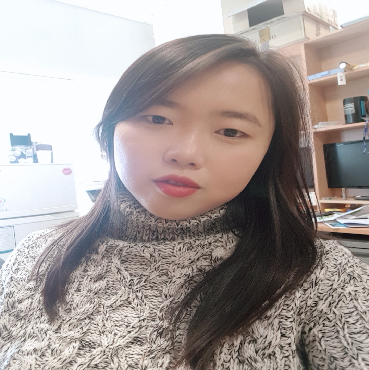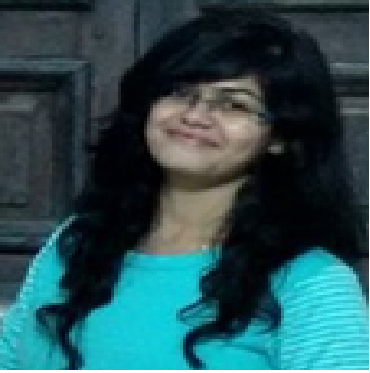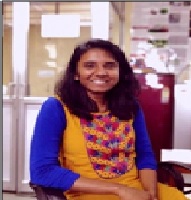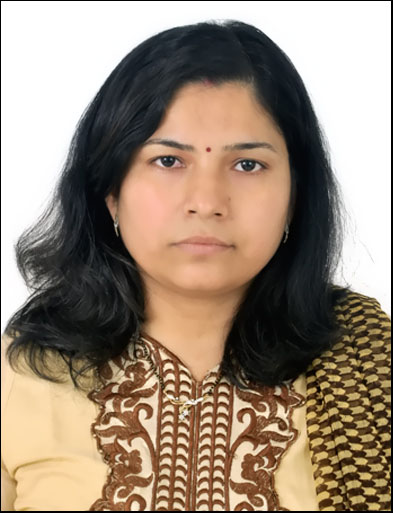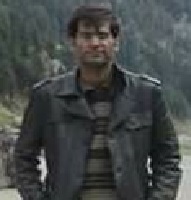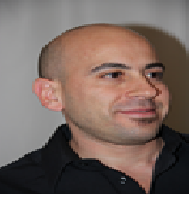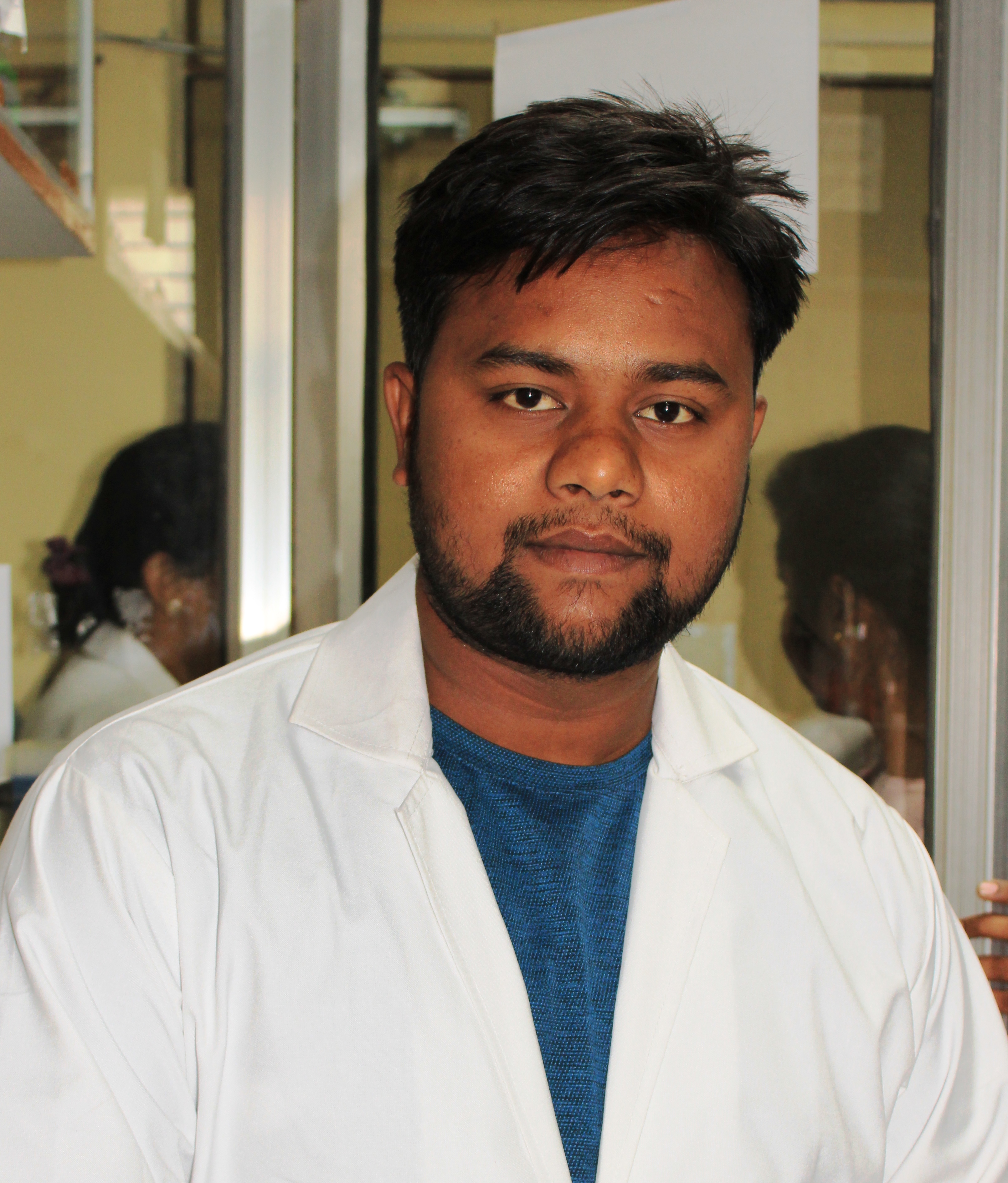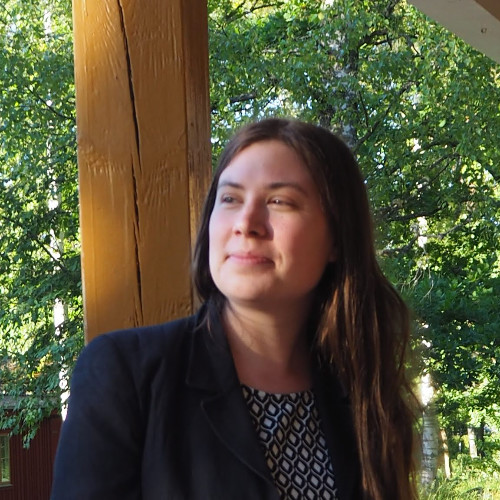4125
Scientific Program
Keynote Session:
Title: 3D cell printed corneal stromal equivalent for corneal tissue engineering
Biography:
Hyeonji Kim received B.S degree in mechanical engineering from POSTECH, South Korea, in 2013. She is currently pursuing the Ph.D. degree in department of mechanical engineering from POSTECH. Her research interest lies on the building the functional human tissues from stem cells via the 3D bioprinting technology and printable biomaterials.
Abstract:
The microenvironments of tissues or organs are complex architectures comprised of fibrous proteins including collagen. The spatial organization of collagen fibrils contribute tissue-specific mechanical properties to the fibrillar matrix and mediates cell attachment, proliferation, differentiation, and migration. In particular, the cornea is organized in a lattice pattern of collagen fibrils which play a significant role in its transparency. Recent studies suggested various engineering methods to control the collagen fibril architectures and replicate the transparent corneal structure using synthetic and natural biomaterials [1-2]. However, the application of fabricated corneal scaffolds was reported to result in insufficient corneal features including low transparency. In this paper, we introduce a transparent bioengineered corneal structure. The structure is fabricated by inducing shear stress to a corneal stroma-derived decellularized extracellular matrix bioink [3] based on 3D cell-printing technique. The printed structure recapitulates the native macrostructure of the cornea with aligned collagen fibrils which results in the construction of a highly matured and transparent cornea stroma analogue. The level of shear stress, controlled by the various size of the printing nozzle, manipulates the arrangement of the fibrillar structure. With proper parameter selection, the printed cornea exhibits high cellular alignment capability, indicating tissuespecific structural organization of collagen fibrils. In addition, this structural regulation enhances critical cellular events in the assembly of collagen over time. Interestingly, the collagen fibrils that remodelled along with the printing path create a lattice pattern similar to the structure of native human cornea after 4 weeks in vivo. Taken together, these results establish the possibilities and versatility of fabricating aligned collagen fibrils; this represents significant advances in corneal tissue engineering. In vivo (a-c) and in vitro (d-f) evaluation results of 3D cell-printed and non-printed corneal implants. Optical images from slit lamp examination, 2D cross-sectional OCT images (a, d), and second harmonic generation (SHG) microscopic images of non-specific collagen (b, e) with Distribution analysis of collagen fibrillar orientation (c, f). In 3D cell-printed group, higher transparency was exhibited compared to non-printed group and corneal stromal pattern by shear-induced collagen alignment was reconstructed similar to that in human cornea.
Title: Antimicrobial activity of different active ingredients of toothpastes and extracts of local spices: a comparative analysis
Biography:
Shamima Nasrin Shaheed is currently working as a full time Professor at University of Dhaka, Bangladesh. She has been participated in more than six international conferences. Her main research interest is Anti-Microbial activity and modern technologies involved in it. She has published many articles and papers in journals.
Abstract:
The buccal cavity is composed of many surfaces, each covered with a plethora of bacterial population, the proverbial bacterial biofilm. A number of such bacteria have been associated in oral ailments such as periodontitis and caries, the most common bacterial infection in humans. The objective of this study was to evaluate the antimicrobial effect of active ingredient (sodium fluoride, sodium monofluorophosphate, sorbitol, sodium bicarbonate, sodium lauryl sulfate etc.) of different toothpastes and four extracts (ethanol, acetone, methanol, aqueous extracts) of five local spices (cinnamon, clove, cardamom, cumin seed, coriander seed) against oral bacteria. Four different extracts of five spices and three active ingredients of different toothpastes were tested for activity against Streptococcus Salivarius, Staphylococcus Aureus, Bacillus Cereus, Acinetobacter Variabilis and two other isolated bacteria grown in tryptone soya broth (TSB) media. These bacteria were isolated from dental sample which were collected from a local Hospital’s dental unit. After isolation growth of these bacteria were optimized by different biochemical tests. 16s DNA sequencing of the isolated bacteria were done by Sanger Dideoxy Sequencing method. A broth micro dilution assay was performed to decide the minimum inhibitory concentration (MIC). Agar well diffusion assay was performed by inoculating bacterial cultureson TSB agar plates. This investigation showed that all five ingredients of toothpastes demonstrated antimicrobial activity. The extracts of cinnamon, clove showed higher antibacterial activity and gave maximum zones of inhibition against all the test organisms. A comparative analysis was also done between active ingredients of toothpaste and extract of spices. These results suggest that certain spices with proven antimicrobial effects, such as clove and cinnamon can have useful effects in the treatment of dental diseases. In different studies it has been shown that SIRT1 is changed or elevated significantly in acute myeloid leukemia 7, human cancer 6.Hidaetal. Examined overexpression of SIRT1 was frequently detected in all different type of non-melanoma skin cancers including squamous cell carcinoma, basal cell carcinoma. It has been shown that SIRT1 is significantly elevated in human prostate cancer 6, acute myeloid leukemia 7, and primary colon cancer 8. Hida et al. examined SIRT1 protein levels in several different types of skin cancer by immunohistochemical analysis 9. Overexpression of SIRT1 was frequently detected in all kinds of non-melanoma skin cancers including squamous cell carcinoma, basal cell carcinoma, Bowen’s disease, and actinic keratosis. Based on the elevated levels of SIRT1 in cancers, it was hypothesized that SIRT1 serves as a tumor promoter 10. However it does not rule out a possibility that increased expression of SIRT1 is a consequence, rather than a cause, of tumorigenesis. In contrast, Wang et al. analyzed a public database and found that SIRT1 expression was reduced in many other types of cancers, including glioblastoma, bladder carcinoma, prostate carcinoma and ovarian cancers as compared to the corresponding normal tissues 11. Their further analysis of 44 breast cancer and 263 hepatic carcinoma cases also revealed reduced expression of SIRT1 in these tumors 11. These data suggest that SIRT1 acts as a tumor suppressor rather than a promoter in these tissues.
Oral Session 1:
- Oral Session
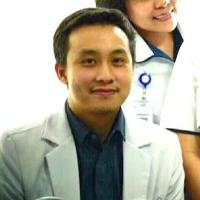
Chair
Edwin Tanihaha
Singapore
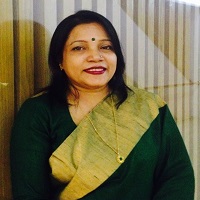
Co-Chair
Shamima Nasrin Shaheed
Bangladesh
Title: Development and characterization of a polymeric scaffold as a wound dressing material
Biography:
Neelima Varshney has completed her M.Tech from Gautam Buddha University, Greater Noida, India and currently pursuing her PhD from Indian Institute of Technology (Banaras Hindu University), Varanasi, India. She has published 1 research paper in reputed international journal. She has qualified national level examinations- NET and GATE with All India Rank (AIR) - 32 and 660 respectively.
Abstract:
The present work has focused on the development of polydimethylsiloxane (PDMS) based three dimensional (3D) scaffold as a wound dressing material. Delay wound treatment may cause invasion of microorganism which can retard wound healing and convert acute wounds to non-healing and chronic wounds. Wound dressing material should be able to form a protecting barrier to the outer environment, and as well as enhancing the healing process by providing drugs such as growth factors, antibiotics etc. In this context, polymeric caffolds have attracted a plethora of attention mainly due to their properties like high surface-to-volume ratio, high porosity, very small pore size, bio-degradability and mechanical strength. PDMS is a repeating chain of Si-O molecules with two methyl groups attached to silicon atoms. Its various properties like high flexibility, gas permeability and optical transparency, make it an ideal scaffold material for wound dressing material. In this study we utilized the chemical-free particulate leaching method for the fabrication of macroporous 3D PDMS scaffold. The porous structure of scaffold with effective pore size range between 60 to 210 μm provides abundant effective porosity for quick drug preloading and release. Furthermore, we characterized PDMS scaffolds for other essential properties such as interconnectivity, surface wettability and mechanical strength. Liquid retention capacity studies show 151.5±7.4% liquid retention in 1X PBS at room temperature. In addition, cell viability and proliferative potential of skin specific cells within the fabricated scaffold were also investigated which can be ascertained that fabricated scaffold are nontoxic and supportive enough to the cells. We also evaluate the water vapor transmission rates (WVTRs) of scaffold to check their ability to maintain adequate moisture at wound area. All these results confirm the suitability of the proposed PDMS scaffold as a future dressing material in wound care applications.
Title: Psyllium husk and enabling technologies of tissue engineering
Biography:
Suruchi Poddar is about to submit her PhD thesis and she is looking for interesting opportunities for Postdoctoral studies in India and abroad. Her area of research is Tissue Engineering and Biomicrofluidics. She has published her results in international reputed journals. Her work in biomaterials earned her many accolades such as the Gold Medal Award at the Institute Day of IIT (BHU), Varanasi and she stood second at a conference in Rytro, Poland in 2018.
Abstract:
The present study relates to the development of a new process/methodological approach for the fabrication of a psyllium husk powder based scaffold systems. The cutting-edge enabling technologies of tissue engineering has been employed in the manufacturing of bioscaffolds withy microporous structure and nanofiber formation, tailored mechanical strength and integrity by chemical and enzymatic cross-linking. To the best of our knowledge, this investigation reports for the very first time (i) the cross-linking procedure of psyllium husk powder and gelatin by the use of 1-ethyl-3-(3-dimethylaminopropyl)-1-carbodiimide hydrochloride and N-hydroxysuccinimide (EDC-NHS) coupling reaction [1], [2], (ii) psyllium husk based novel bioink which is enzymatically cross-linked for three-dimensional (3D) bioprinting process [3] and (iii) the formation of a psyllium husk powder based nanofibrous electrospun sheet for tissue engineering applications, as shown in the given image below. Although psyllium is available in various forms such as husk, seed, powder, fiber etc., mucilage/gum extracted from psyllium seed and husk has widely been reported in tissue engineering and pharmaceutical applications. This study proposes the direct use of readily available psyllium husk powder as the biomaterial, without any further modifications. The extraction of psyllium gum from psyllium husk requires some tedious and time consuming processes such as collecting and washing of seed or husk, soaking overnight, drying by heating for several hours, filtration or precipitation followed by further washing in an organic solvent, filtered, centrifuged, collected, solvent evaporated dried under reduced pressure and finally passed through a suitable sieve to store in an airtight container for further use [4]. Therefore, to exclude the need of such trivial and time-consuming processes this invention suggests direct use of psyllium husk powder without any further purification and collection, for the preparation of psyllium husk powder-based degradable bioscaffolds for tissue engineering and regenerative medicine.
Title: Tissue engineering and Scaffold designing challenges through digital Games and Simulations
Biography:
Nahid Kheradmand is expert in stem cell research and teaching new innovation related to tissue engineering and regenerative medicine and working as a research and development researcher in Mashhad Stem Cell Research group in Mashhad University of medical Sciences. She graduated from Nourdanesh Institute of Higher Education in Cellular and Molecular Biology, Isfahan. Her enthusiasm in modelling and simulation games connected to innovation in stem cell research results in designing different projects related to simulations in tissue engineering and regenerative medicine.
Abstract:
Tissue engineering known as a multi-disciplinary area of research gathering different life science and engineering disciplines with the goal of fabricating tissue replacements improving the regeneration process of damaged tissues or organs. Developing an ideal scaffold provides efficient site for remodelling process of a tissue and promotes proliferation and differentiation of cells. During past decades many fabrication technologies have been done for designing applicable scaffolds. Various methods of modelling and simulation will permit ideas to be evaluated without any waste of materials. Moreover, special modelling techniques will have a role in personalized medicine. Innovative digital games not only will address many complexities in tissue engineering concepts by providing informatics tools and simulation methods but also provide a variety of decision-making context. Furthermore, combination of different skills like innovation, design, production and collaboration in digital games related to tissue engineering strategies will grow the future of this science in both technique and learning style for an individual. For example there are different biological challenges like controlling the release of growth factors in 3D designed scaffolds, introducing angiogenesis, creating appropriate multiple tissue assembly and forming a complex heterogeneous tissue scaffolds accommodating tissue interactions. Novel digital games in tissue engineering procedures provide a simulated environment with different laboratorical and informatics variables in which a player has to be able to manage and take decisions in an effective way. Therefore, assessing the new simulation game will provide helpful data for professional computer scaffold designers and revolutionize the science of tissue engineering.
Title: Unravelling the efficiency of berberine loaded Bovine Serum albumin nanoparticle for breast cancer therapy
Biography:
Dr. Sunita Patel currently working as an Assistant Professor at School of Life Sciences, Central University of Gujarat, India. Her main area of resarches are Biochemistry, biophysical chemistry, RNA-protein interactions, protein chemistry, spectroscopy: application to biology. She has participated in many international conferences, events and meetings.
Abstract:
Berberine is a naturally occurring plant-derived alkaloid, isolated from Berberis species. Berberine possess multiple pharmacological properties including anti-inflammatory, Anti-oxidant, Anti-diabetic, Antihypertensive, Antidepressant, Antidiarrheal, Antimicrobial, Neuroprotective, Hepatoprotective, Antitumor and Anticancer activity. Though these outcomes are very promising, its low water solubility and oral bioavailability restrict its clinical uses. Hence, in the present study we have reported the entrapment of Berberine (BBR) in Bovine Serum Albumin Nanoparticle (BSA NPs) and its cytocompatibility to Breast Cancer cell line (MDA-MB-231). BSA NPs and Berberine loaded BSA nanoparticles (BBR-BSA NPs) were successfully synthesized by desolvation method. The BSA NPs alone and BBR-BSA NPs were extensively characterized for the size, shape, surface charge, morphology, stability, drug content and in vitro drug release. Physiochemical characterization of prepared nanoparticles was done by using DLS, FESEM, FTIR, DSC and TGA. The size of synthesized nanoparticles were found to be within the suitable range for drug delivery, having positive charge analysed by zeta potential. The SEM images of nanoparticles implied that prepared nanoparticles are of spherical shape. The drug entrapment efficiency of prepared nanoparticles was found to be 85 % with a drug loading capacity of 7.78 %. The FTIR spectra confirms the synthesis of Berberine loaded nanoparticles. Time dependent stability study suggests that nanoparticles are quite stable in aqueous solution at pH 7.4. The MTT assay, Trypan blue assay and AO-EtBr staining proved that the prepared NPs are selectively toxic towards breast cancer cell lines and kill the cells more efficiently as compared to Berberine alone. The results of intracellular uptake studies suggest that BBR-BSA NPs could effectively improve the anticancer activity of BBR by delivering it to target site for potential therapeutic use. This work provides a novel therapeutic approach for inducing breast cancer cell death or inhibiting cell growth. All the above information suggests that BBR-BSA NPs may emerge as a novel paradigm for treatment of breast cancer.
Title: Ethnobotanical Exploration of Flora of Sathan Galli District Mansehra, KP, Pakistan
Biography:
Khalid Rasheed Khan is currently working as an assistant professor in Botany at Government Post Graduate College, Pakistan. He has ten years of experience in teaching and research. He is highly motivated regarding research activities. He has participated in many national conferences as a speaker held in Pakistan. He is beneficiary of research productivity award at college level. He supervised many research students at Bachelor level.
Abstract:
Statement of the Problem: The investigated(Sathan Galli) area is remote and community of the area is poor depend on the use of medicinal plants for curing a variety of ailments such as toothache, backache, headache, body pain, abdominal pain, rheumatism, indigestion, wound healer, cough, expectorant and tonic. This was the first ever survey on medicinal plants exploration to check out the local community pressure on their utilization. Methodology: The investigated area was visited frequently during 2014 to 2015 to collect ethnomedicinal flora. Plant specimens were collected, dried, poisoned, preserved and mounted on standard herbarium sheets. Semistructured questionnaire method was used to gather ethnobotanical information from 34 randomly selected villages. Information about the local uses of the plants such as medicinal, timber, fodder and fuel wood etc. were got through random sampling by interviewing 300 individuals. The data was gathered and analysed by using MS Excel, 2013. Conclusion & Significance: A total of 170 plant species belonging to 55 families were identified which are being used by the locals of the study area. The study revealed that the indigenous peoples of the area exploited 86 (51.19%) species as traditional medicinal plants, 136 (80.95%) species for fodder, 48 (28.57%) for fuel wood, 28 (16.66%) for timber woods, 07 (4.16%) for wild vegetable and 02 (1.19%) for ethnoveterinary therapies. Similarly 17 (10.11%) species of wild edible fruits, 2 (1.19%) species for making agricultural tools, 1 (0.59%) species for fencing field borders. It was observed that the local inhabitants used plants resources for not only ethmedico but also for multiple purposes. There is dire need of free medical treatment for the local inhabitants therefore government should provide free medical facility in such a remote area so that the local medicinal flora can be conserved which is being extinct. This first ever ethnobotanical study may become baseline study for future researches.
Title: Interferon Regulatory Factor 4 in Cancer Gene Regulation
Biography:
N C Tolga Emre received his doctoral degree from the University of Pennsylvania in 2005, and did postdoctoral work at US National Institutes of Health. He is a faculty at BoÄŸaziçi University’s Department of Molecular Biology & Genetics in Istanbul/Turkey since 2011, currently as an associate professor, and group leader at the Laboratory of Genome Regulation. Dr. Emre’s research focuses on gene regulatory mechanisms, especially epigenetic chromatin modifications and transcription factors in cancers. His research has been funded by grants from European Commission, European Molecular Biology Organisation, Scientific and Technological Research Council of Turkey and BoÄŸaziçi University. Dr. Emre is a recipient of 2013 Young Scientist award from Science Academy Foundation of Turkey.
Abstract:
Abnormal activities of epigenetic modifiers and transcription factors play critical roles in shaping the aberrant gene expression programs of cancer cells. Identification of the target genes and signaling pathways controlled by such factors are an important step in designing targeted therapies against cancers. Interferon regulatory factor 4 (IRF4) is a transcriptional regulator with crucial roles in the development and functioning of immune cells, and implicated in malignant transformation (1). We have previously shown a critical role for IRF4 in a variety of B-cell cancer cells, and identified its mechanisms of action (2-4). These and related work point to IRF4 pathways as therapy targets in cancers. Several studies also implicate IRF4 function in non-immune cells, such as in melanocytes (5). For instance, a number of genome-wide genetic studies associated variation at the IRF4 gene with pigmentation phenotypes and skin cancers. However, despite the observed genetic links and generally high expression, the role of IRF4 in skin cancers remains under-studied and poorly understood. Therefore, we set out to identify the functions of IRF4 in skin cancer cells using genome-wide, cell and molecular biological approaches. We have taken a candidate approach to discover the upstream modulators of IRF4 expression in these cells. In parallel, we have performed localization (ChIP-seq) and transcriptomic (RNA-seq) assays in order to identify its genome-wide targets. These analyses, together with analyses of The Cancer Genome Atlas (TCGA) data, point to a role of IRF4 in epigenetic regulation of these cells, in addition to other cancer- and development-related pathways. Furthermore, our preliminary studies implicate IRF4 as a critical factor in skin cancer cell proliferation and survival. Taken together, our work on IRF4 provides mechanistic insight at the cellular and molecular level in cancers, and point to potential new therapy strategies.
Oral Session 2:
- Poster Presentation
Title: Fabrication of Silk-Gelatin Based Corneal Analogs Using Electro spinning Technique
Biography:
Ajay Kumar Sahi has completed his M.Tech from IIT Guwahati and currently pursuing his PhD from Indian Institute of Technology (Banaras Hindu University), Varanasi, India. His research interest is oriented towards corneal tissue engineering. He has published more than 2 research papers in reputed journals and attended and presented his work in more than 5 conference proceedings. He has secured first prize in oral presentation on “Electrospun silk mat for corneal tissue engineering” 1st IEEE EMBS International Student Conference in Ramaiah Institute of Technology, India, from 19-21 December 2018.
Abstract:
Blindness due to cornea as the second major cause after cataract and allograft is the most common technique used to treat corneal blindness. The demand of high quality donor corneas is significantly higher compared to availability. To meet this scenario, Tissue Engineering (TE) has become an emerging field of interest in replacement of allograft. Tissue engineering approach deals with biodegradable or non-biodegradable scaffold with cells incorporated inside to mimic the scenario of Extracellular Matrix (ECM) inner environment of an organism and must have the ability to function as body organ temporarily. The researchers have proposed many approaches that could meet the elevating demand of cornea. These approaches could satisfy a few aspects but require more relevant approach to mimic the corneal architecture. The published reports show the importance of gelatin in terms of transparency and cellular biocompatibility; usage of electrospinning with respect to fibrous alignment and mechanical strength, and exploitation of silk as a transparent, biocompatible and mechanically strongest material. We, for the first time, have proposed a combined approach to meet almost all the features of the cornea into a single scaffold. The scaffold was prepared using electrospun gelatin mat percolated with a certain ratio of silk fibroin. The scaffold was air dried and further characterized in terms of transparency, swelling and degradation, porosity, nanofibrous architecture and their functional groups. The results obtained depicts transparency approximately 70-80%, FTIR characterization confirms the presence of both biomaterials inside the scaffold. Water imbibing capacity of the scaffolds shows 200-300% increase in the total weight of the scaffolds. The scaffolds were stable upto 15 days at 37 °C inside the CO2 incubator. The enhanced physicochemical properties of the fabricated scaffold makes it a potential candidate for corneal tissue engineering, it would also create new avenues for other areas of tissue engineering.
Title: Preparation and characterization of pectin/CMC/MCC composite as second degree burn wound dressing on Wistar rat (Rattus novergicus) model
Biography:
Muhammad Alfath is undergraduate student of Department of Chemistry, Institut Teknologi Bandung, Indonesia. He works for his project in bioorganic division under supervision of Dr. Ciptati, MS, M.Sc and Dr. Rachmawati.
Abstract:
Porous scaffolds made of biopolymers are the main topic in tissue engineering for living organism in this recent time. Biopolymers were chosen because their cheap price, widely available in nature, non-toxic, and non-allergic. A novel material was developed from composite of pectin, carboxymethyl cellulose (CMC) and microcrystalline cellulose (MCC) with lyophilization technique. The composites that have been made are then determined for their physical properties and ability in healing second-degree burns in the Wistar rat model. Composite optimization results consisting of pectin 0.3% (w/v), CMC 0.12% (w/v) and MCC 0.03% (w/v) indicates the ideal pore size (d = 30-300 μm) for the growth of fibroblasts in the process of wound closure. Addition of MCC to composites can reduce the rate of in vitro degradation of composites in a phosphate buffer system of pH 7.4 and temperature of 37 °C. The addition of MCC to composites is also able to significantly increase the thermal resistance of composites compared to composites without MCC. In vivo studies conducted on Wistar rats showed significantly different results (p<0.05) between the treated group and the negative control group. On the 21st day, the remaining wound size in the treated group were 16.38 ± 10.04% and the remaining wound size negative control group was 43.59 ± 19.10%. The results of this study indicate that the pectin/CMC/MCC composite material has the potential to be used as a second-degree burn wound dressing.
Oral Session 3:
- Video Presentation
Title: Heterogeneity of sympatho-adrenal system reveals new possible origin of neural-crest derived tumors
Biography:
Ms. Pamela Klecki currently working as a full time research scholar at Karolinska Institute, Sweden. She has published more than 5 research papers in different journals and participated in many international conferences and events.
Abstract:
Adrenergic chromaffin cells of the adrenal medulla are generated through recruitment of nerveassociated neural crest-derived cells termed Schwann cell precursors (SCPs). The present study evaluates the effect of serotonin precursor (5-HTP) on survival and proliferation of neural crest derived progenitors into chromaffin cells on E13.5 explants derived from C57BL/6 wild type mice. We also investigate whether serotonin (5-HT) enhances neurite outgrowth and proliferation in non-differentiated rat pheochromocytoma cells (PC12), which originate from chromaffin cells. Here we report that treatment with serotonin precursors resulted in a significant decrease of proliferating tyrosine hydroxylase positive (TH+) cells in the adrenal gland (AG). In addition, we demonstrated that serotonin enhances neurite outgrowth in non-differentiated cells. The preliminary data indicate the potential of serotonin to function as a new molecular target for neural crest-derived tumors as pheochromocytoma.

